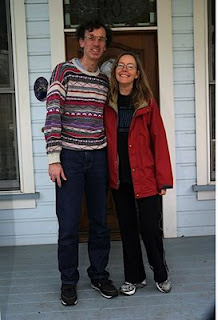 During a prime-time press conference on March 24th, President Obama said he follows a philosophy of persistence. He was referring to his efforts to shore up the economy, which I won't comment on, due to lack of expertise. But I will say this: Obama is an inspiring speaker and he's correct that persistence will be a key component of our economic recovery.
During a prime-time press conference on March 24th, President Obama said he follows a philosophy of persistence. He was referring to his efforts to shore up the economy, which I won't comment on, due to lack of expertise. But I will say this: Obama is an inspiring speaker and he's correct that persistence will be a key component of our economic recovery.I have always been persistent. I'm sometimes so persistent that I drive my coworkers nuts. Obama may also be driving some of his coworkers, the press, and the American public a bit nuts with his Energizer-bunny approach to policy development and dissemination. Nonetheless, I applaud his doggedness and think it will work in the long run. Take me (please take me!) I've relied on persistence for many years and have achieved success because of it.
I arrived in California in 1981 from Chicago, IL, with a suitcase and guitar. That's me in the picture above with the Golden Gate Bridge in the background. I sold my books, of which I had hundreds, to Powell's Bookstore in Hyde Park. (Few people realize that Powell's started in Chicago, not Portland.) I sold my few pieces of furniture to friends, gave my winter clothes away, and spent a fortune to have a career consultant type, print, and mail my resume to every organization in California she could find in her big printed volume of Standard & Poor's. (Few personal computers existed yet so I was at the mercy of somebody with an S&P book and an IBM Selectric.) Then I spent almost every dime I had on a one-way ticket to San Francisco!
I arrived at the San Francisco airport with little cash, no credit cards, no debit cards, no winter coat (dumb!) and, luckily, no toxic assets. In fact, I had many positive assets:
- A year of experience working as a computer programmer at the University of Chicago
- An MS in Information Science from the University of Michigan
- A brother who was working on his PhD at UC Berkeley and who let me sleep on his floor and even lent me his comfy down sleeping bag
- My brother's girlfriend who lent me her car so I could go apartment hunting (I bet she couldn't wait to get me off her living room floor!)
- Good genes and bell-bottom jeans
- An inheritance that wasn't monetary but did include strong will power and good critical-thinking skills, maybe too much critical thinking, according to some ex-coworkers :-)
- A love of adventure, hard work, and computer programming
- Five job interviews lined up, all of which resulted in job offers
- Terrific friends, especially my beautiful friend Dawn who is highly intelligent and willing to gently nudge me back in the right direction when I'm being dumb (as in posting her picture on the Internet!?) She followed me to California a year later, where her persistence led to great success.
A lot of people are unemployed and underemployed these days. I'd like to say to them, don't give up! Focus on your positive assets, not your toxic assets, and develop a philosophy of persistence. It worked for me and it worked for President Obama and will continue to work for him, the economy, and you.





